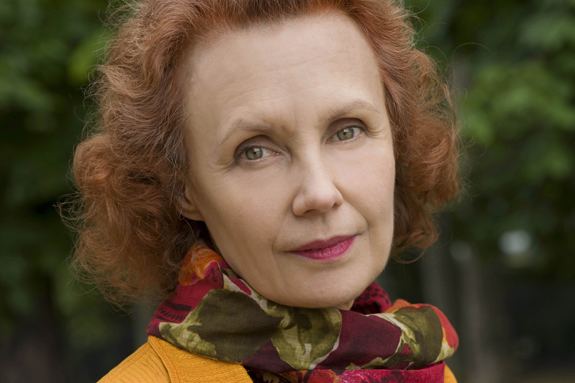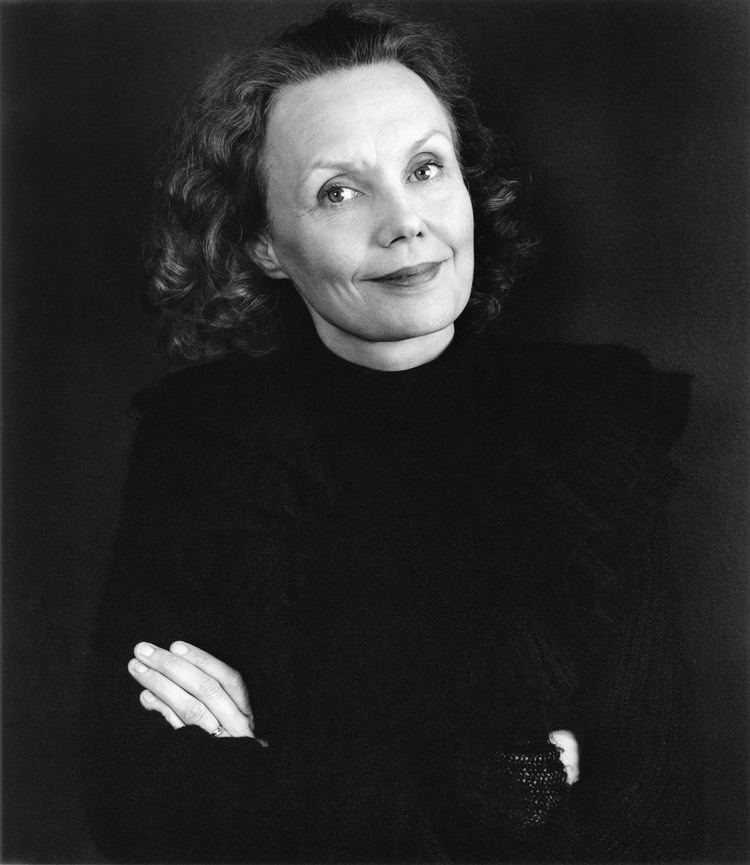Name Kaija Saariaho Role Composer | Librettists Amin Maalouf | |
 | ||
Albums From the Grammar of Dreams, L'aile du songe Similar People Esa‑Pekka Salonen, Anssi Karttunen, Magnus Lindberg, Kari Kriikku, Dawn Upshaw | ||
Kaija saariaho on composing using a computer in the past
Kaija Anneli Saariaho ([ˈkɑi̯jɑ ˈsɑːriɑho]; née Laakkonen, born 14 October 1952) is a Finnish composer based in Paris, France.
Contents
- Kaija saariaho on composing using a computer in the past
- Kaija Saariaho Nympha Reflection 2001
- Life and work
- Awards and honours
- Selected works
- Selected recordings
- References

Saariaho studied composition in Helsinki, Freiburg and Paris, where she has lived since 1982. Her research at the Institute for Research and Coordination Acoustic (IRCAM) marked a turning point in her music away from strict serialism towards spectralism. Her characteristically rich, polyphonic textures are often created by combining live music and electronics.

In 1986, Saariaho was awarded the Kranichsteiner Preis at the Darmstadt International Summer Courses for New Music. In 1988, she won the Prix Italia for her work Stilleben and in 1989 both Stilleben and Io were awarded the Prix Ars Electronica. In 2013, she was awarded the Polar Music Prize.

During the course of her career, Saariaho has received commissions from the Lincoln Center for the Kronos Quartet and from IRCAM for the Ensemble Intercontemporain, the BBC, the New York Philharmonic, the Salzburg Music Festival, the Théâtre du Châtelet in Paris and the Finnish National Opera, among others.
Kaija Saariaho: Nymphéa Reflection (2001)
Life and work
Saariaho was born in Helsinki. She studied at the Sibelius Academy under Paavo Heininen. After attending the Darmstadt Summer Courses, she moved to Germany to study at the Hochschule für Musik Freiburg under Brian Ferneyhough and Klaus Huber. She found her teachers’ emphasis on strict serialism and mathematical structures stifling, saying in an interview:
"You were not allowed to have pulse, or tonally oriented harmonies, or melodies. I don't want to write music through negations. Everything is permissible as long as it's done in good taste."In 1980, Saariaho went to the Darmstadt Summer Courses and attended a concert of the French spectralists Tristan Murail and Gerard Grisey. Hearing spectral music for the first time marked a profound shift in Saariaho's artistic direction, and these experiences guided her decision to attend courses in computer music that were being given by IRCAM, the computer music research institute in Paris. In 1982, she began work at IRCAM researching computer analyses of the sound-spectrum of individual notes produced by different instruments. She developed techniques for computer-assisted composition, experimented with musique concrète, and wrote her first pieces combining live performance with electronics. She also composed new works using IRCAM's CHANT synthesiser. Three of her pieces are grouped under the same title because they were each developed with CHANT: Jardin secret I (1985), Jardin secret II (1986) and Nymphea (Jardin secret III) (1987). Her works with electronics were developed in collaboration with Jean-Baptiste Barrière, a composer, multimedia artist and computer scientist who directed the IRCAM's department of musical research from 1984–1987. Saariaho and Barrière married in 1982.
In Paris, Saariaho developed an emphasis on slow transformations of dense masses of sound. Her first tape piece, Vers Le Blanc from 1982, and her orchestral and tape work, Verblendungen, are both constructed from a single transition: in Vers Le Blanc the transition is from one pitch cluster to another, while in Verblendungen, it is from loud to quiet. Verblendungen also uses a pair of visual ideas as its basis: a brush stroke which starts as a dense mark on the page and thins out into individual strands, and the word Verblendungen itself, which means "dazzlements".
Her work in the 1980s and 1990s was marked by an emphasis on timbre and the use of electronics alongside traditional instruments. Nymphéa (Jardin secret III) (1987), for example, is for string quartet and live electronics and contains an additional vocal element: the musicians whisper the words of an Arseny Tarkovsky poem, Now Summer is Gone. In writing Nymphea, Saariaho used a fractal generator to create material. Writing about the compositional process, Saariaho wrote:
"In preparing the musical material of the piece, I have used the computer in several ways. The basis of the entire harmonic structure is provided by complex cello sounds that I have analysed with the computer. The basic material for the rhythmic and melodic transformations are computer-calculated in which the musical motifs gradually convert, recurring again and again."Saariaho has often talked about having a kind of synaesthesia, where her synaesthesia involves all of the senses. She has said:
"...the visual and the musical world are one to me... Different senses, shades of colour, or textures and tones of light, even fragrances and sounds blend in my mind. They form a complete world in itself."Another example would be Six Japanese Gardens (1994), a percussion piece accompanied by a prerecorded electronic layer of the Japanese nature, traditional instruments, and chanting of Buddhist monks. During her visit to Tokyo in 1993, she expanded her original percussion conception into a semi-indeterminate piece. It consists of a total of six movements, all representing a garden composed of traditional Japanese architecture, by which she was inspired rhythmically. Especially in movement IV and V, she explored many possibilities of complex polyrhythm in liberated instrumentation.
“…I felt a connection between architecture and music: both art forms select and introduce materials, let them grow, give them form, prepare new contrasting elements, create different relations between the materials.” She said.Moisala wrote in the book, Kaija Saariaho, about the indeterminate nature of this composition.
“[Kaija said:]'There are so many kinds of percussion instruments which I do not know. I thought that it would be most interesting to see how the musicians choose their instruments in certain passages.’ the identity and character of the composition remains the same even when the instruments are changed; each musical idea requires certain kinds of sound color but not a particular instrument.”On 1 December 2016, the Metropolitan Opera gave its first performance of L'Amour de loin, the first opera by a female composer to be staged by the company since 1903, and the second opera by a female composer ever to be presented at the Metropolitan Opera. The subsequent transmission of the opera to cinema on 10 December 2016 as part of the Metropolitan Opera Live in HD series marked the first opera by a female composer, and the first opera conducted by a female conductor (Susanna Mälkki), in the series.
Saariaho and Barrière have two children.
